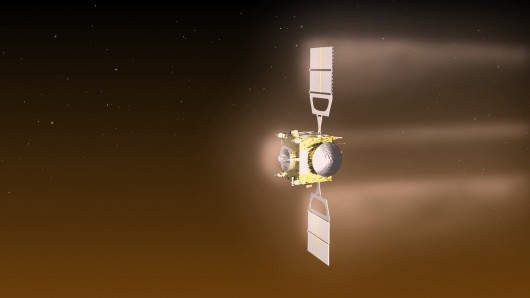After eight years of study of the second planet in our Solar System, ESA’s Venus Express orbiter is winding up its science program in anticipation of a plunge into the Venusian atmosphere sometime in the next two months.
The space agency says that the unmanned orbiter’s service life is coming to an end because its propellant is running low, so ESA is sending the probe to take a very close look at the Venusian atmosphere by flying straight through it.
Once the Express runs out of fuel and plunges into the atmosphere, it’ll be greeted by incredibly harsh conditions: wind quadruple that of Boulder’s all-time record, and heat triple that of a pizza oven, to name a couple.
Aerobraking campaigns have been performed before, but they’ve never brought any spacecraft as close to Venus as the Express is slated to go. With a target distance of about 81 miles from the planet, this mission aims to go about 20 miles closer than ever before.
Regardless of how the next several months turn out, Esposito’s already labelled the project a “great success.”
He considers the crowning achievement to be measuring the composition of Venus’ surface, and providing evidence that volcanic activity has taken place there.
Plus, considering the fact that many missions to Venus — including the most recent one, in 2012 by the Japanese — never even achieve orbit, even getting there is a success. The eight years of research, Esposito said, were far from guaranteed.
“”It spacecraft engineering,” he added, “it’s hard just to go to Venus and have your mission work at all.”
Agencies/Canadajournal
 Canada Journal – News of the World Articles and videos to bring you the biggest Canadian news stories from across the country every day
Canada Journal – News of the World Articles and videos to bring you the biggest Canadian news stories from across the country every day



